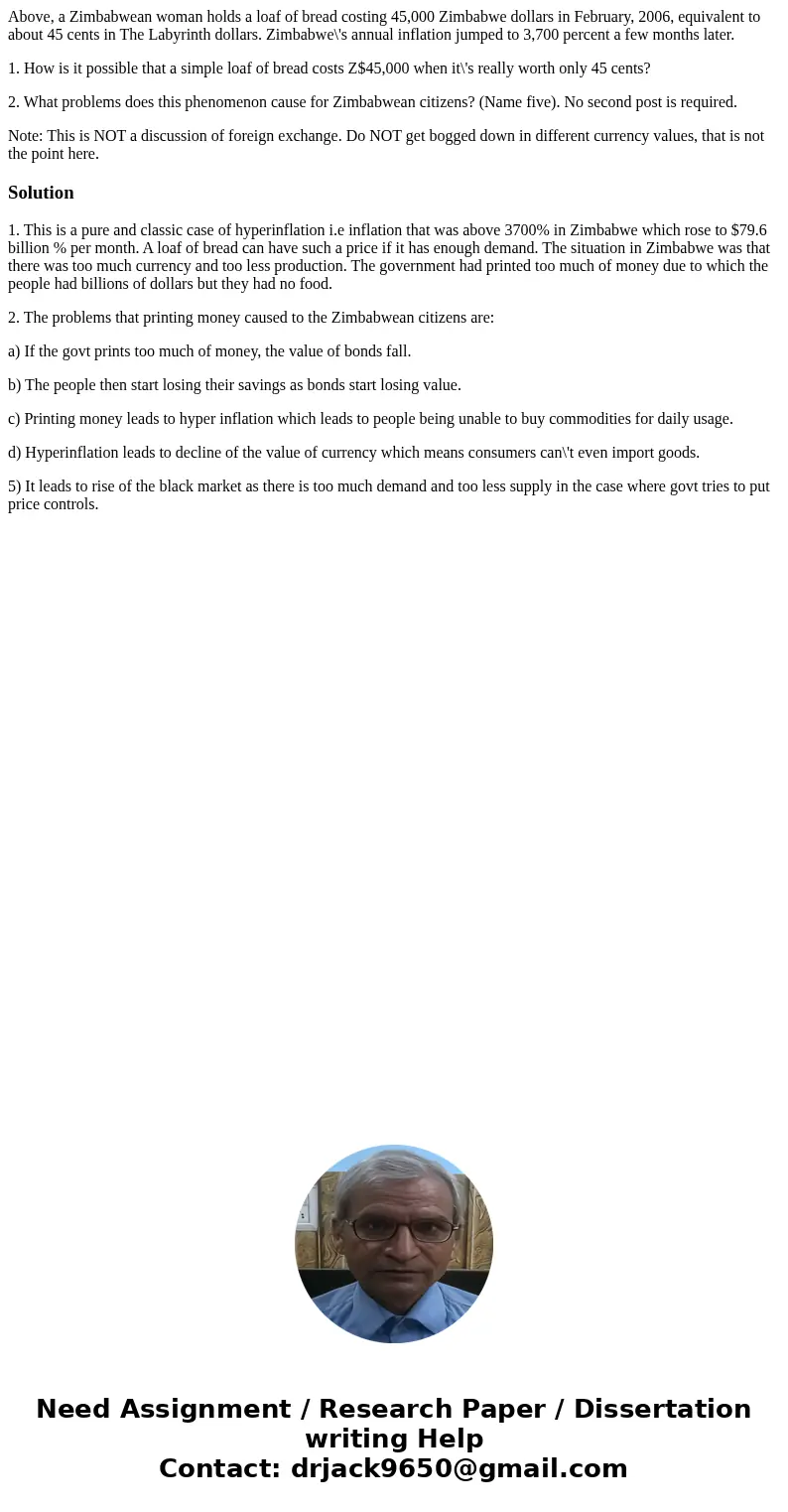Above a Zimbabwean woman holds a loaf of bread costing 45000
Above, a Zimbabwean woman holds a loaf of bread costing 45,000 Zimbabwe dollars in February, 2006, equivalent to about 45 cents in The Labyrinth dollars. Zimbabwe\'s annual inflation jumped to 3,700 percent a few months later.
1. How is it possible that a simple loaf of bread costs Z$45,000 when it\'s really worth only 45 cents?
2. What problems does this phenomenon cause for Zimbabwean citizens? (Name five). No second post is required.
Note: This is NOT a discussion of foreign exchange. Do NOT get bogged down in different currency values, that is not the point here.
Solution
1. This is a pure and classic case of hyperinflation i.e inflation that was above 3700% in Zimbabwe which rose to $79.6 billion % per month. A loaf of bread can have such a price if it has enough demand. The situation in Zimbabwe was that there was too much currency and too less production. The government had printed too much of money due to which the people had billions of dollars but they had no food.
2. The problems that printing money caused to the Zimbabwean citizens are:
a) If the govt prints too much of money, the value of bonds fall.
b) The people then start losing their savings as bonds start losing value.
c) Printing money leads to hyper inflation which leads to people being unable to buy commodities for daily usage.
d) Hyperinflation leads to decline of the value of currency which means consumers can\'t even import goods.
5) It leads to rise of the black market as there is too much demand and too less supply in the case where govt tries to put price controls.

 Homework Sourse
Homework Sourse